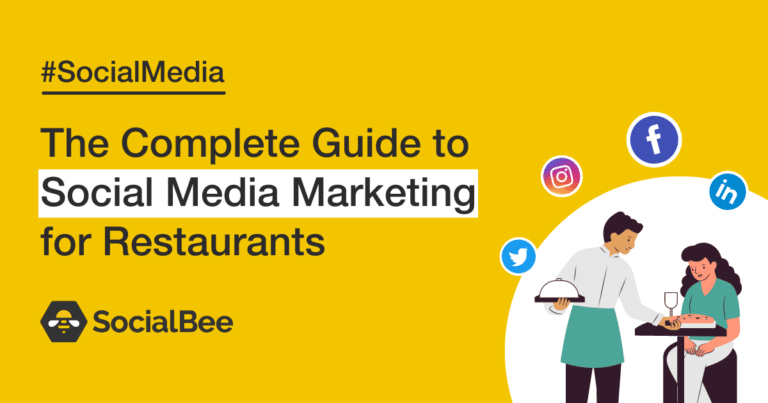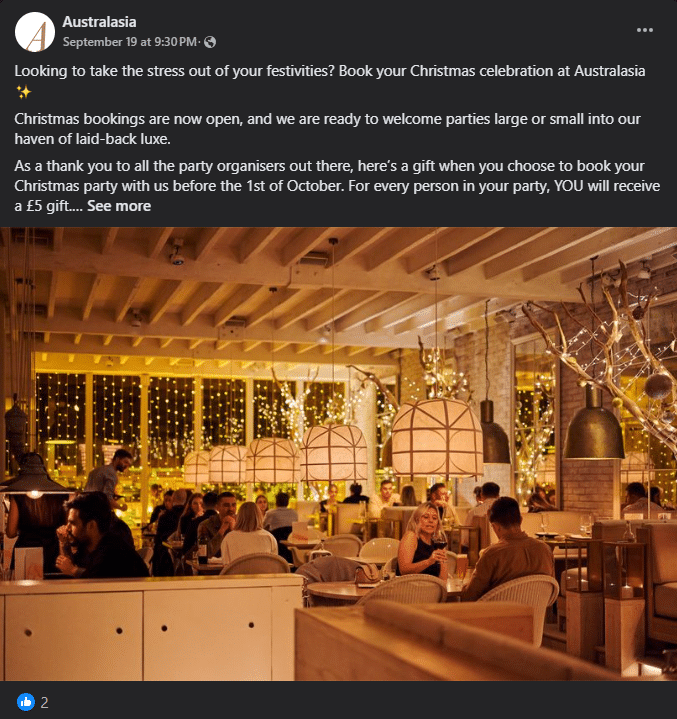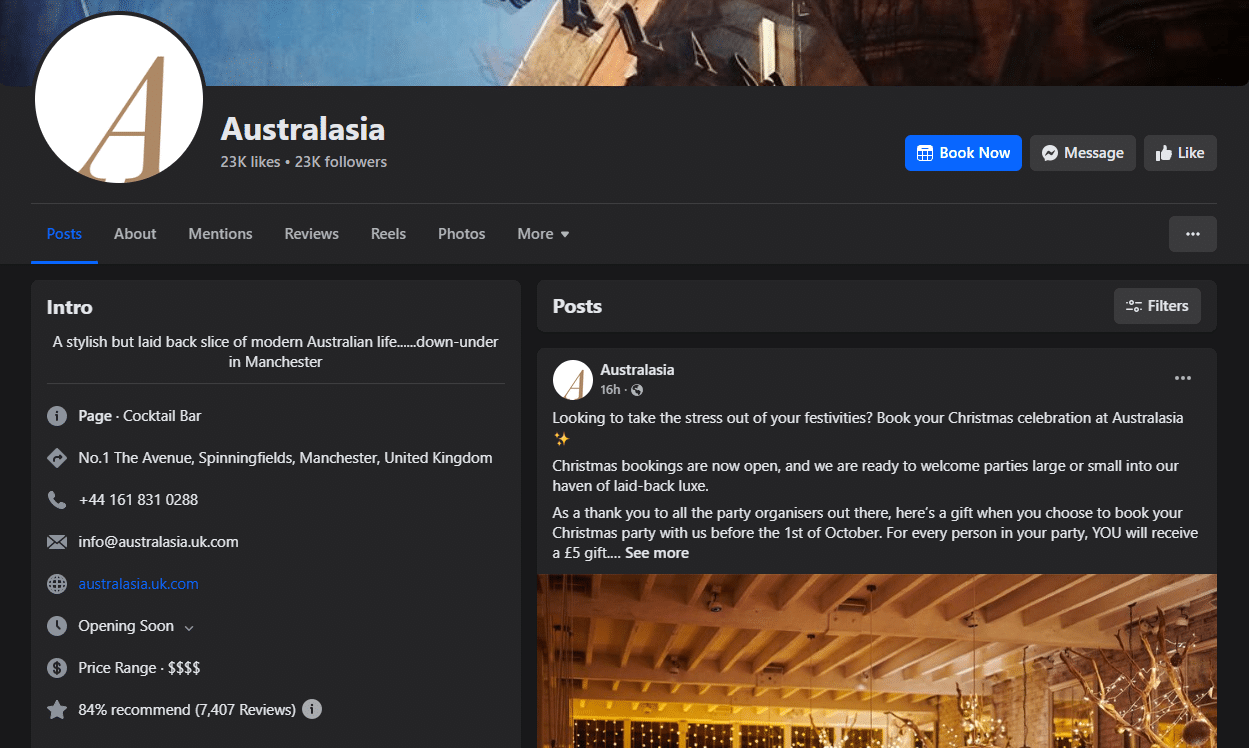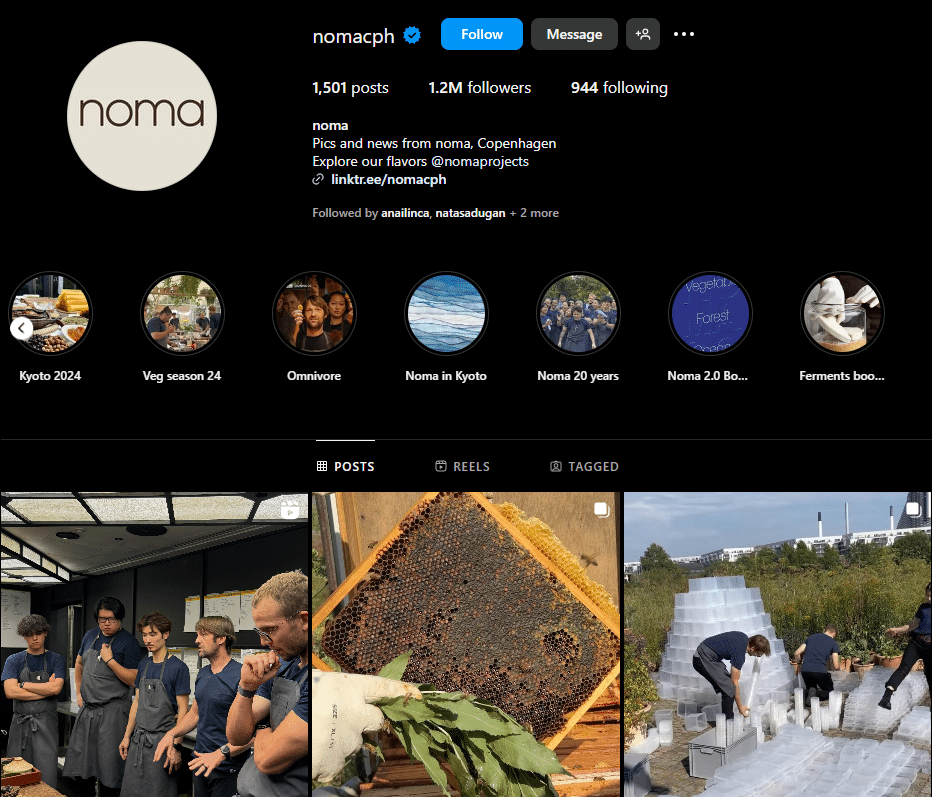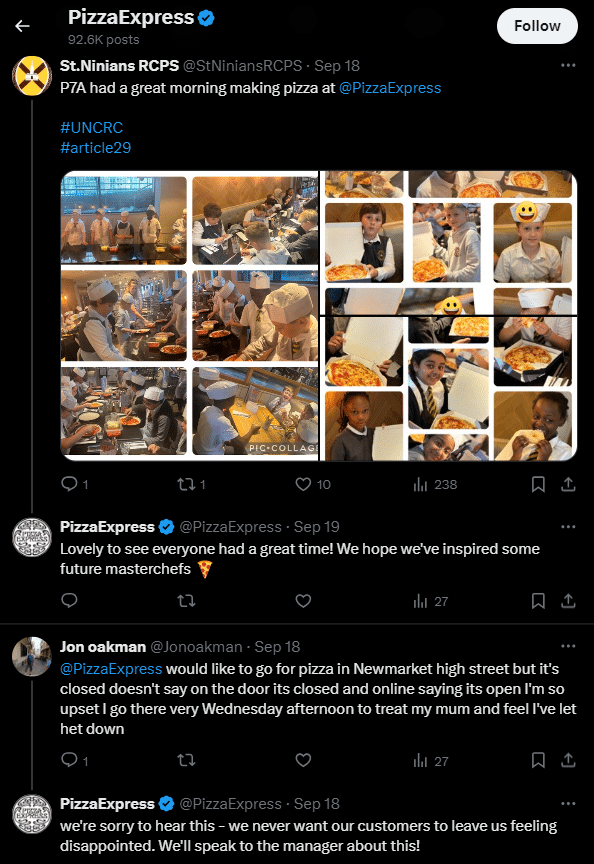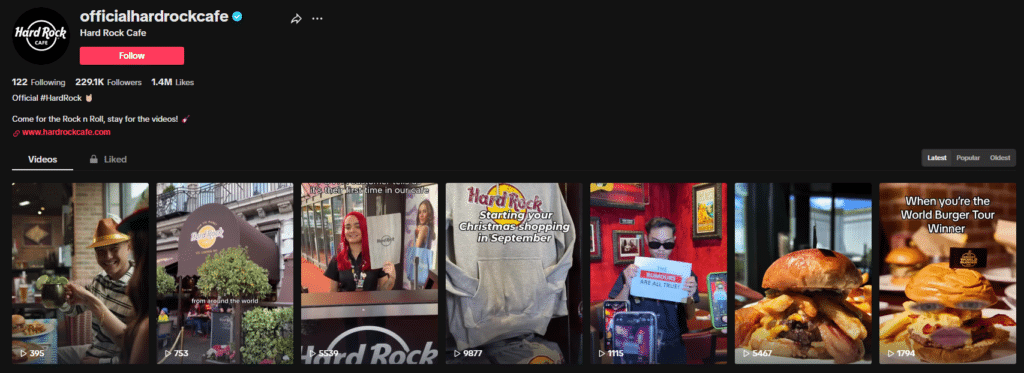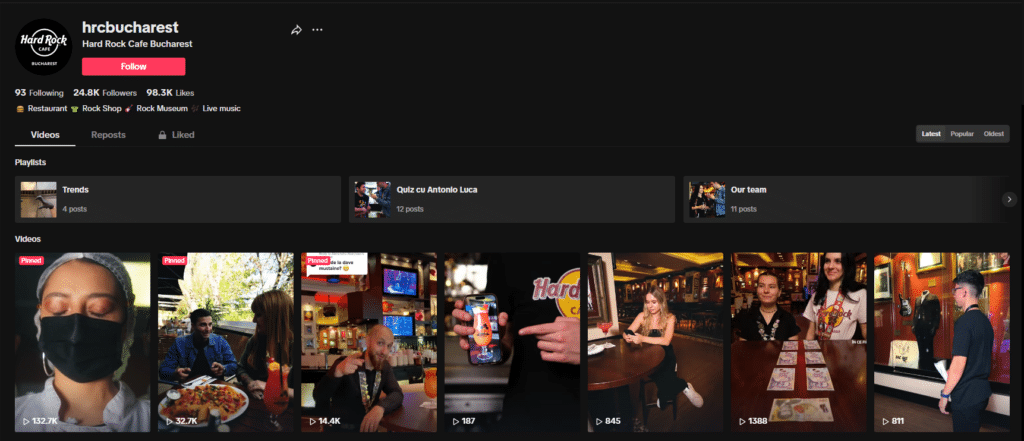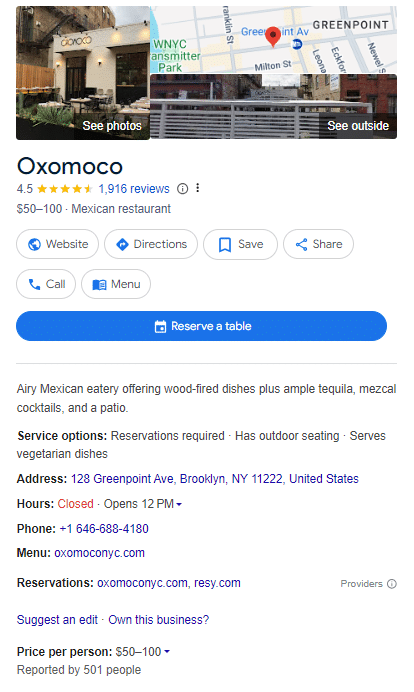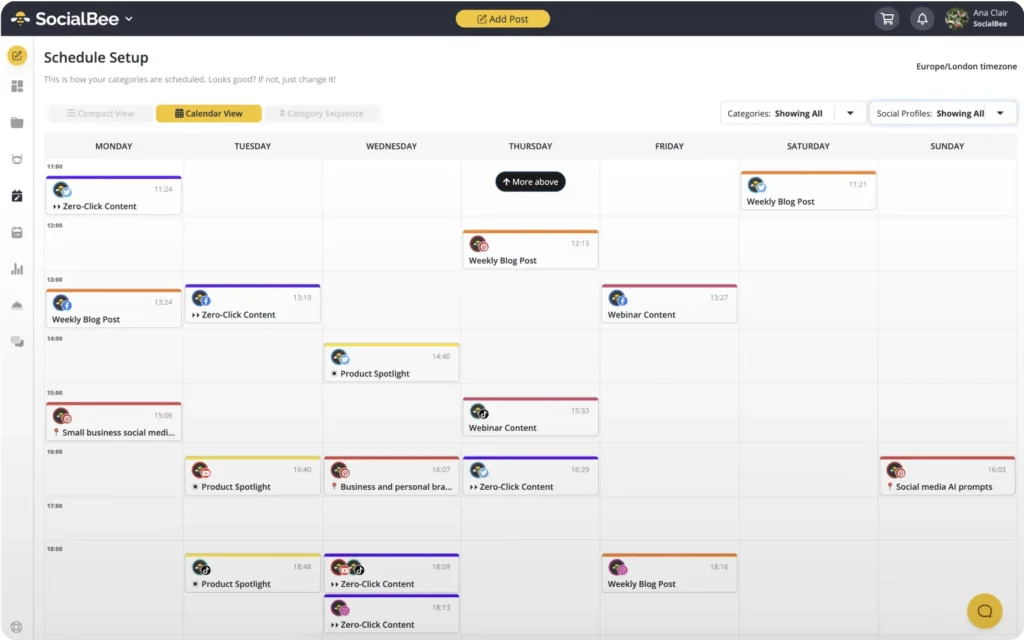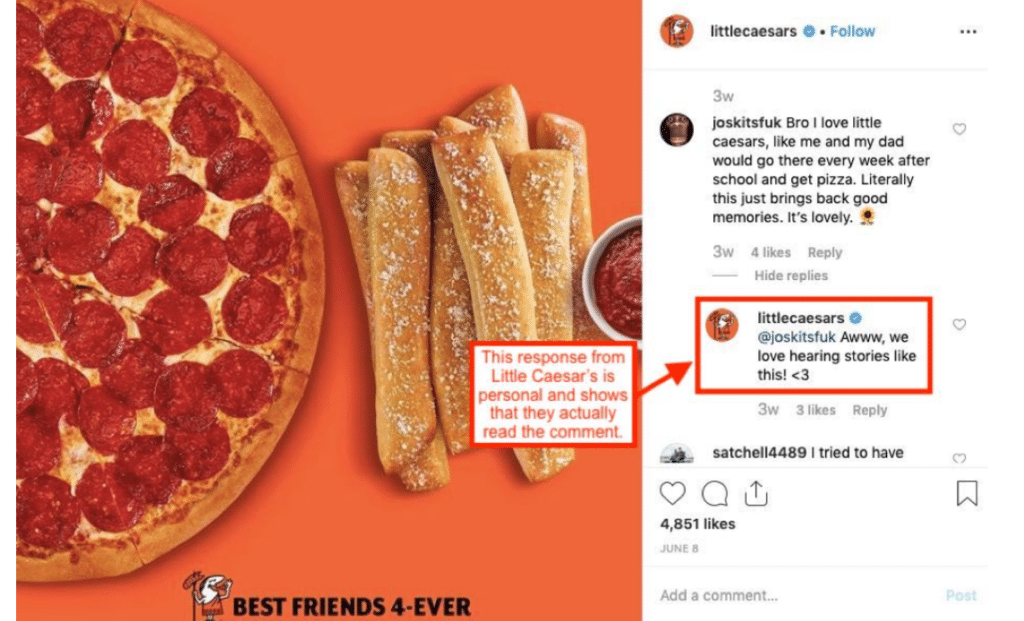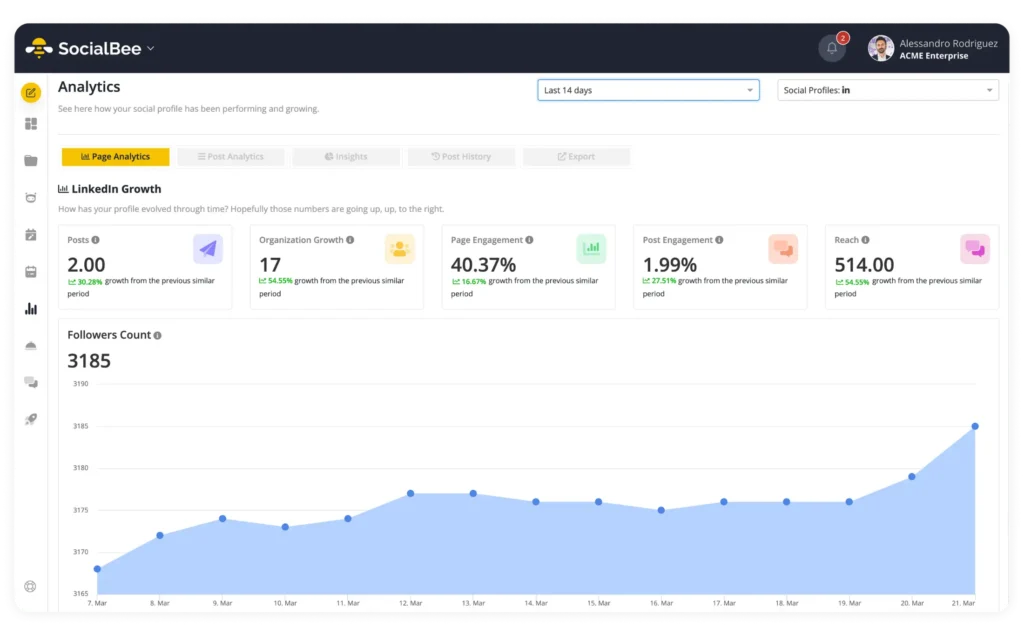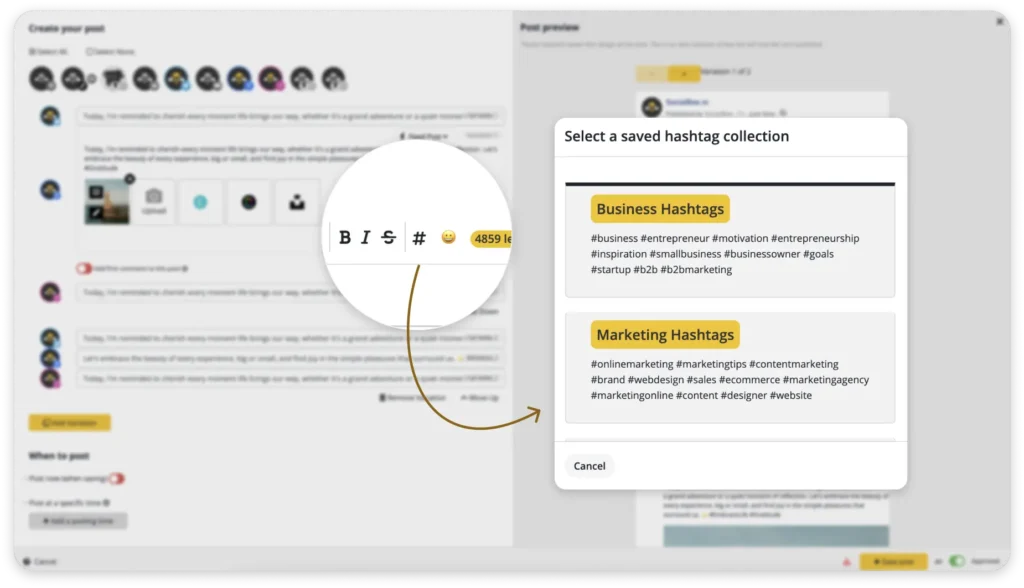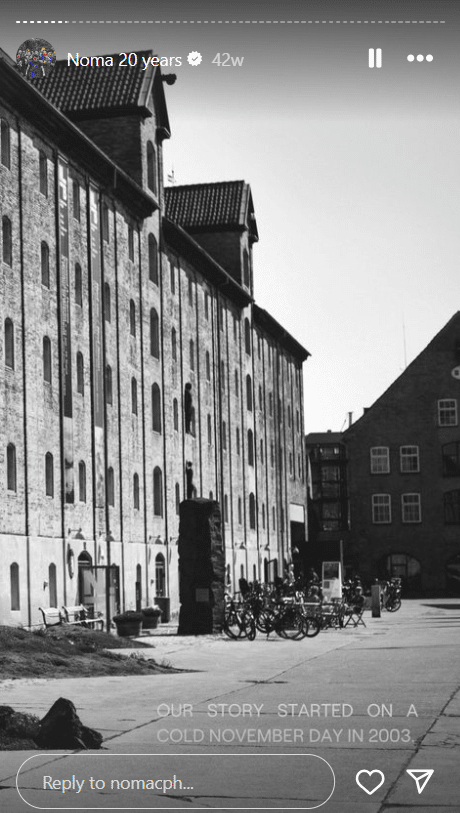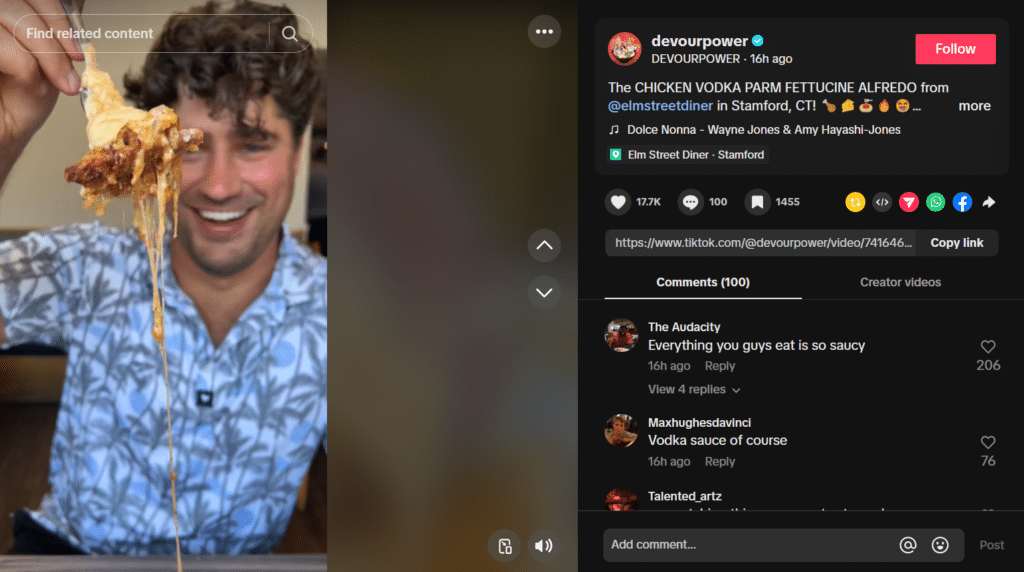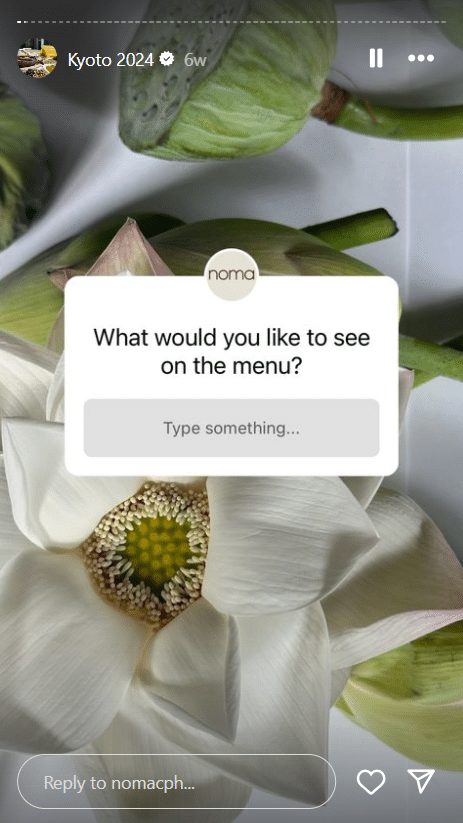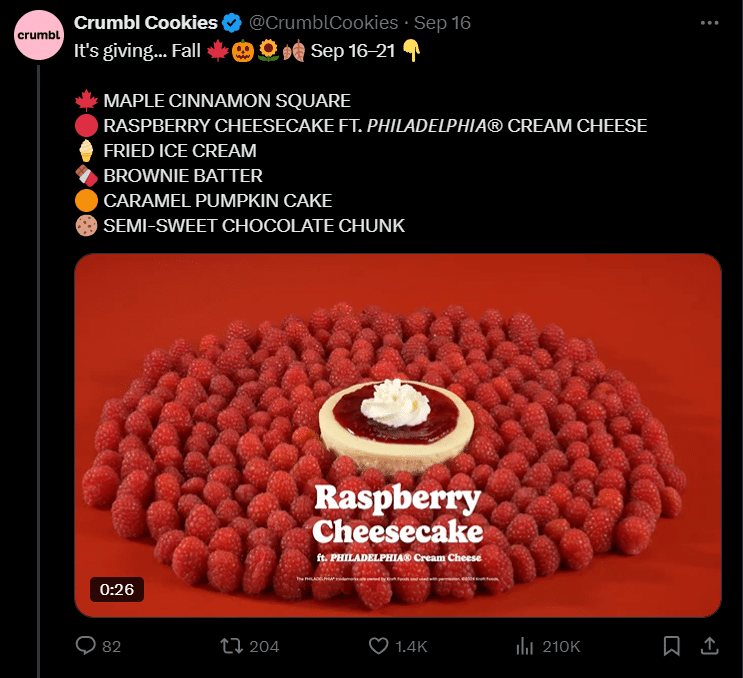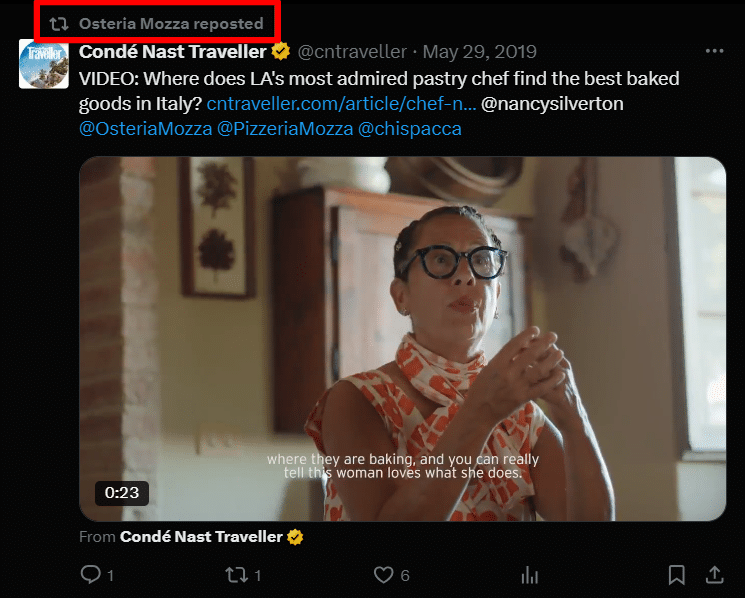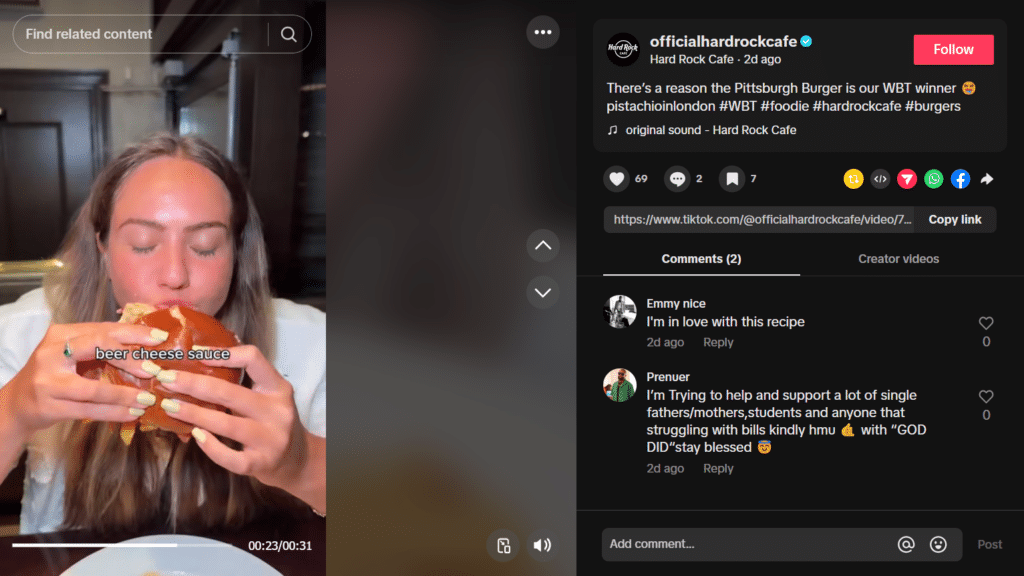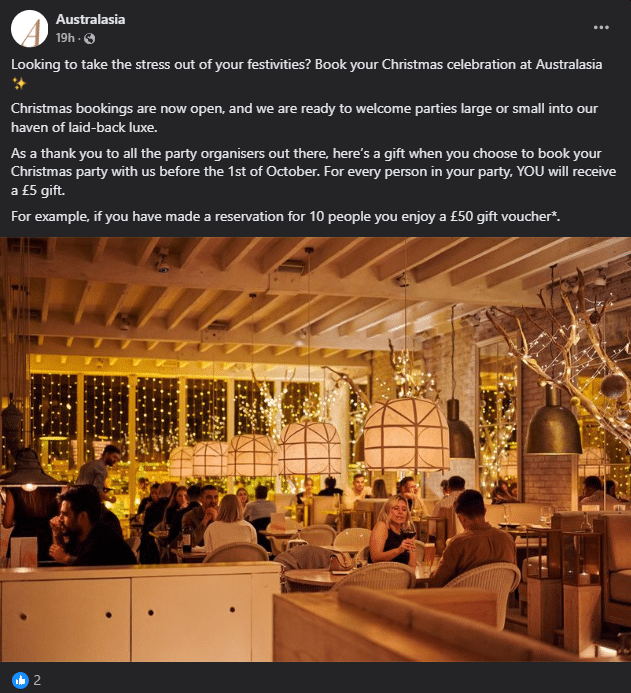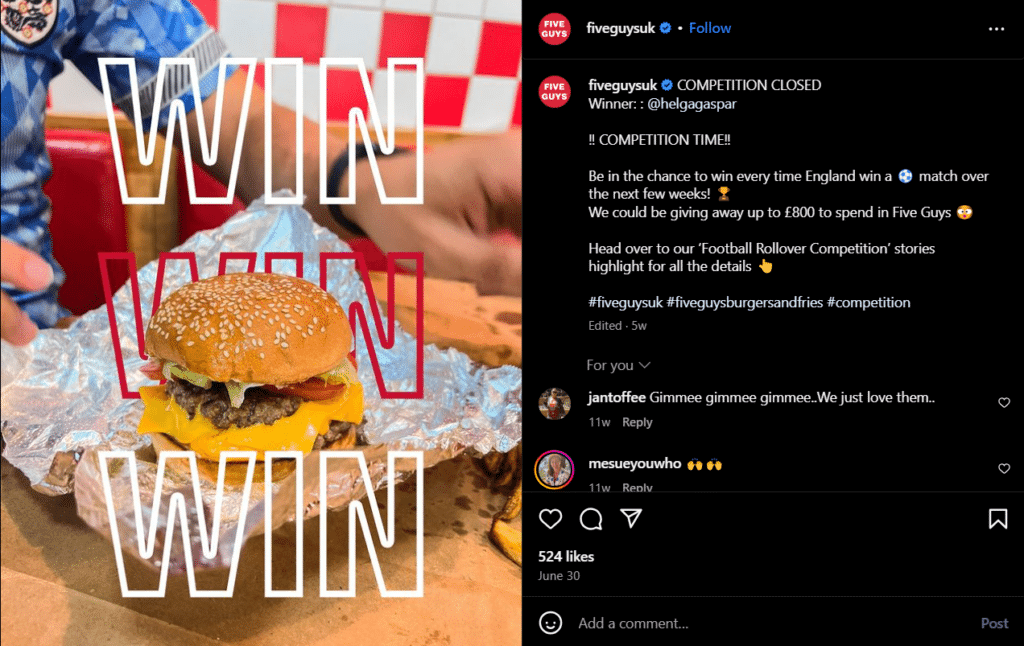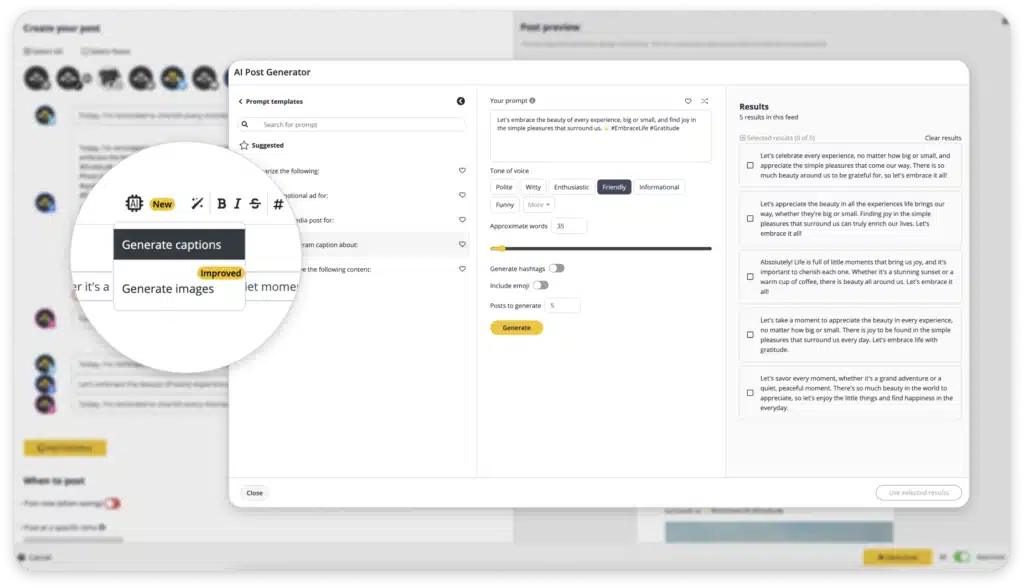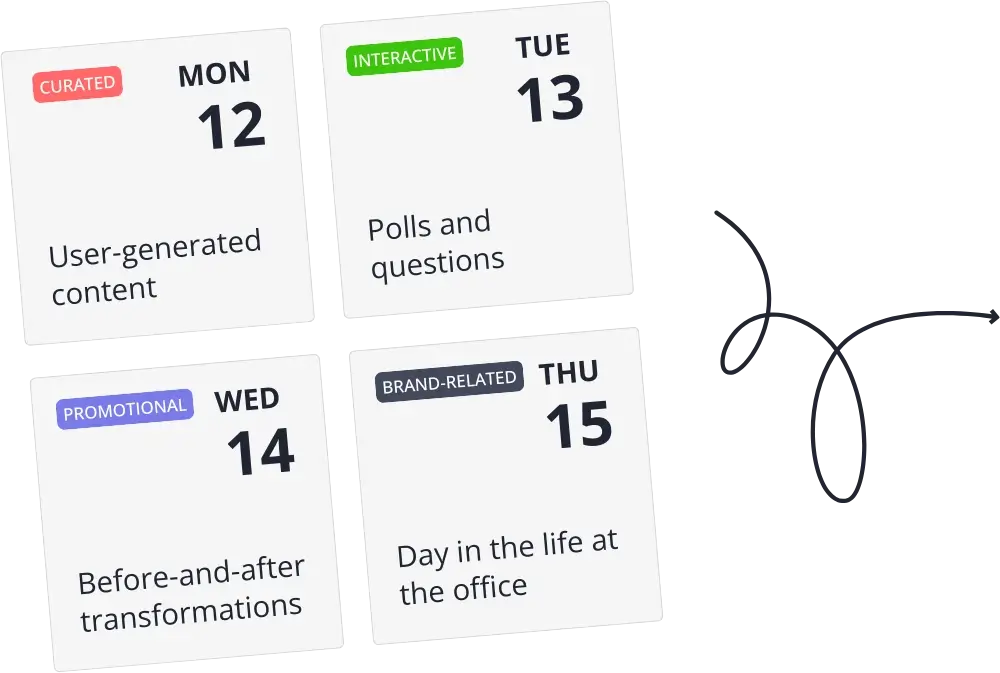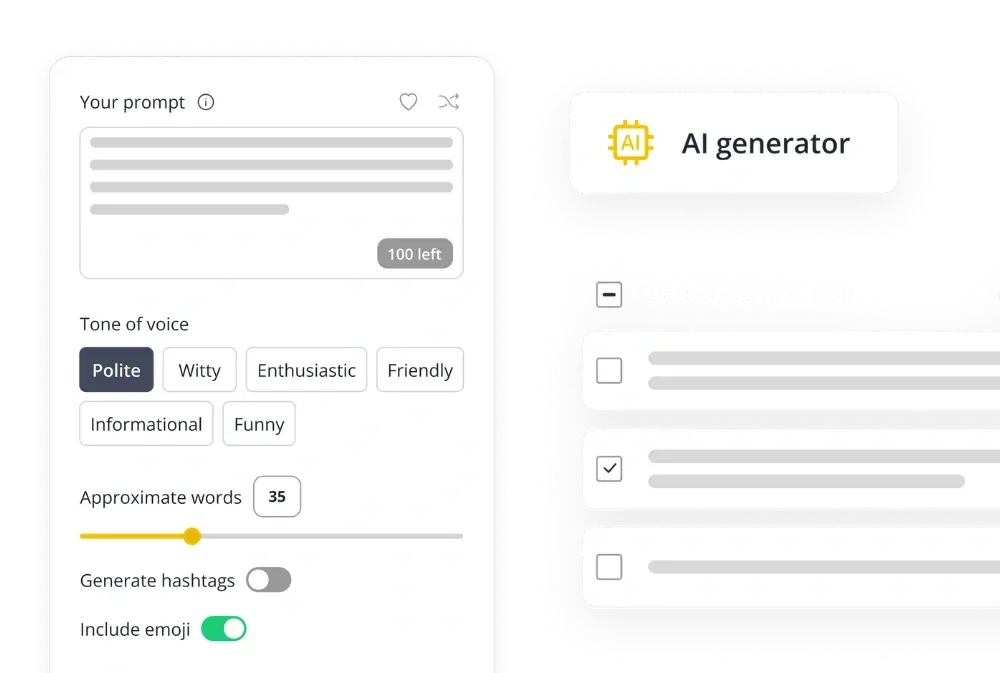Guest Author
Are you a restaurant owner looking to grow your business and reach new customers? If so, let’s break down the best tips and tricks for social media marketing for restaurants!
Do you know the best social media platforms for restaurants or what post types bring the most engagement? These are the things we’ll touch on in this article. Plus, we’ll give lots of examples of successful restaurant social media accounts so you can see these tips in action.
Without further ado, let’s cover everything you need to know to make your restaurant successful online. Are you ready to boost your restaurant’s social media strategy?
Short Summary
- The best social media platforms for restaurants are Facebook, Instagram, X (Twitter), TikTok, and Google Business.
- Build your social media presence by creating engaging content, actively interacting with your audience, and measuring success using social media management tools like SocialBee to refine your strategy.
- Incorporate relevant hashtags into your restaurant’s social media strategy by researching popular hashtags (e.g. #veganrestaurant), location-based hashtags (e.g. #newyorkfoodtruck), developing branded tags to promote user-generated content, and using 1-3 hashtags per post to enhance visibility without appearing spammy.
- Collaborate with local businesses and influencers to enhance your restaurant’s visibility by showcasing unique offerings, building community ties, and leveraging influencer reach to authentically promote your brand and attract new customers.
- Stay updated on social media trends relevant to your industry to maximize engagement and potentially go viral.
- Share your restaurant’s unique story—whether it’s a family recipe, a long-held dream, or the meaning behind your name—to create an emotional connection with your audience.
- Showcase your dishes through visually appealing videos. Create engaging content by capturing behind-the-scenes of food preparation.
- Promote your restaurant by highlighting what makes it special, especially your food. Share enticing images and updates about new menu items or limited-time specials on social media, and feature popular dishes that resonate with your customers.
- Monitor media mentions of your restaurant and share positive coverage with your followers using Google Alerts. Highlight mentions from reputable sources on platforms like Facebook and X (Twitter), and consider using Instagram Stories or TikTok videos to creatively discuss the news, enhancing your restaurant’s credibility and visibility.
- Capitalize on holidays by creating enticing posts that encourage diners to celebrate with you, and host social media contests and promotions to attract customers.
The Importance of Social Media Marketing for Restaurants
You may ask yourself why a restaurant even needs a social media presence. As we all know, restaurants rely heavily on word of mouth, and in today’s world, those conversations are happening online. Just think about how many times a tasty-looking Story from a friend made you try a new restaurant. That’s a good example of how the word can spread about your business.
Therefore, social media marketing can be your most important restaurant marketing channel.
A strong social media marketing strategy can bring many benefits to restaurants. By regularly posting high-quality photos, interactive videos, and graphics, restaurants can attract new customers and engage with existing ones, increasing brand visibility and credibility.
Restaurant social media marketing can also serve as a platform for customers to leave reviews, feedback, and recommendations, which can help restaurants better understand their customers’ preferences and improve their offerings.
In the context of food and beverage ecommerce, these insights gained through social media interactions are instrumental in shaping an effective online presence and elevating the overall customer experience.
With the right strategies in place, a strong social media presence can help restaurants build a loyal following, increase customer retention, and ultimately drive more traffic through their doors.
Restaurant Social Media Marketing: What You Need to Know
If you want to discover how to effectively market your restaurant on social media platforms, you are in the right place.
Here are the best social media tips for restaurants:
- Choose the social media platforms to focus on
- Build a social media presence for your restaurant
- Make use of relevant hashtags
- Collaborate with local businesses & influencers
- Stay on top of social media trends
1. Choose the Social Media Platforms to Focus On
The first step in restaurant social media marketing is choosing your platforms. There are a lot of different social media platforms out there. Each tends to serve a different target demographic and not every platform is suited for every business.
Ultimately, the best social media platforms for restaurants will depend on their specific target audience, marketing objectives, and resources.
However, the top 5 most suited social media sites for restaurants are:
- X (Twitter)
- TikTok
- Google Business
Once you choose the platform or platforms to focus on, the first step in the actual social media management process is to create a business profile on each one of them. Include your logo, a bio, and your Google Maps location.
With over 3 billion monthly users, Facebook is one of the most popular social media platforms worldwide. Restaurants can use Facebook to create a business page, post updates, share photos of their dishes, and interact with customers through comments and messages.
When trying to come up with the best social media marketing ideas for your Facebook page, it’s important to keep in mind its demographics. The platform’s most active age groups are different from platforms such as Instagram or TikTok. As of 2024, despite most people on the platform being millennials, the age group that spends the most time on the social network is between 55 and 64 years old.
Highlight your restaurant in a way that speaks to a more mature audience, as they are most likely the ones visiting your page and leaving online reviews. Let’s take Australasia, a Manchester-based restaurant with an impressive following on Facebook, as an example.
Their posts are all designed to give off an impression of sophistication and luxury, from the color scheme to the captions. Their main focus is on highlighting their dishes, paired with copy that sparks users’ appetites. When they’re not making their followers’ mouths water, they remind them that their location also hosts special occasions such as birthdays, anniversaries, or holidays.
Their posting schedule is consistent, once every few days, and their information is up to date. From a short but clear description of what the restaurant is about to where to find it, where to call, its price range, and a host of positive reviews.
The goal is to make it as easy as possible for customers to book a table. One look at their page gives you all the information you need before deciding to visit them.
Instagram is a highly visual platform mainly used on mobile devices that allows restaurants to showcase their dishes and establish a strong brand identity. With 2 billion monthly active users, Instagram is a great platform for restaurants to create business accounts and reach younger audiences.
Start by crafting an Instagram aesthetic that matches your restaurant’s vibe to capture attention from the get-go. Make use of Instagram’s features that generate the most engagement, such as Stories and Reels, to highlight dishes and promote events.
User-generated content is also your best friend on Instagram. Use Instagram’s collaborations feature to create posts with food influencers and double your reach, as well as monitor your mentions and repost customer Stories of your location and food.
Noma Copenhagen is one of, if perhaps not the most famous fine dining restaurant in the world. They are known for offering a unique experience and ingeniously using ingredients to create 20-course meals. It’s only natural that their Instagram presence is as commanding and interesting as their restaurant.
The focus in their images remains mostly on their ingredients, as well as how they work with them. The color theme fits the Nordic cuisine while maintaining a lowkey, sophisticated look. Their Highlights take people through the behind-the-scenes of their team, whether they’re working on their menu, their show, book, or just telling the restaurant’s story.
Getting a reservation at Noma takes years and costs a pretty penny. An actual meal at the restaurant is something very few people will get to experience in their lifetime, yet over one million people are willing to experience it through Instagram.
X (Twitter)
X’s fast-paced and real-time nature makes it the top social media platform for restaurants to talk with customers and respond to inquiries or complaints quickly.
While it supports videos and images like any other platform, what makes it stand out is its highly engaging nature. If you want to monitor people’s opinions on your restaurant, as well as be able to provide swift customer support, this is the platform to do it.
You can also interact with your customers by liking and reposting their posts about your restaurant, showing your appreciation as well as further spreading positive feedback with your followers.
Pizza Express is a UK restaurant chain that knows how to use X to advertise its dishes and resolve customer issues.
When they’re not posting mouthwatering images of pizza and pasta dishes found in their locations, Pizza Express is addressing both the positive and negative feedback that customers mention them in on the platform.
They’re highly active, which means the waiting time for a reply is short, minimizing frustration and increasing the probability of people having a positive experience with them, even if their initial feedback was negative.
TikTok
TikTok’s short-form video format has become increasingly popular among younger audiences, making it a great platform for restaurants looking to reach a new audience. Restaurants can use TikTok to showcase their dishes, share cooking tips, and participate in viral trends to increase brand awareness.
The platform’s algorithm and how it curates content on the “For You” page means that participating in trends and using popular sounds is one of the best ways to increase reach and interactions. Don’t hesitate to embrace a more humorous side of your brand when creating your TikToks – while maintaining your authentic tone of voice, of course.
Hard Rock Cafe is another restaurant chain that is killing it with its social media advertising, especially on TikTok.
The restaurants are famous all over the world, which is why they do not limit their social media presence to one account. While there is an official Hard Rock Cafe page that is international, there are also local pages for multiple restaurants, like the one in Bucharest for example.
Their official page highlights their signature dishes and apparel and references global events and holidays. On their local accounts, there is more freedom for trends; they collaborate with relevant influencers and rely on the type of humor that best works for each location and language.
Google Business
What is the place people first go to when looking for a place to eat? Google! Having a Google Business account will allow you to be found easily by your customers in the local area.
Keep your Google Business page up to date with:
- A short description of your cuisine
- The exact address
- Opening hours
- Service options
- Contact information
- Menu
- Price range
Take Oxomoco’s example below:
If someone were to Google their business, they would have all the information they would need to decide on visiting the restaurant or booking a table. They also used keywords in their business description to ensure they come up when someone is searching for Mexican restaurants.
Another important element of Google Business is the reviews. Encourage your customers to leave Google reviews for your business, as they will positively impact your Google Business account. Take the time to address negative reviews and get to the bottom of issues, to show you care about your clients having a positive experience in your restaurant.
Now that you have all your social media accounts set up, there is only one thing left to do: create and maintain a strong social media presence. Thankfully, there are social media management tools like SocialBee that will allow you to create, schedule, and share all your posts from one place.
With SocialBee’s Schedule Setup feature, you can ensure your content strategy is carefully planned, and your posts are uploaded consistently to all your social media platforms even if you are away. Make your social media marketing plan more efficient by saying goodbye to manual posting and hello to your automated content calendar.
Schedule content for all your social media platforms in one place with SocialBee.
2. Build a Social Media Presence for Your Restaurant
There are several important steps to follow when building an effective social media presence. Each requires its own set of tools, time, and effort, but all are crucial for success.
These are the most important steps to follow when crafting a restaurant’s social media presence:
- Create meaningful content
- Engage with your audience
- Measure your success
A. Create Meaningful Content
Planning your social media content ahead of time is the starting point for social media marketing, but it’s more than just creating a couple of posts and calling it a day.
When creating content for social media sites, restaurants need to make sure that they’re developing a consistent brand voice, visual style, tone, and message. They should also ensure that they are posting engaging content on a consistent and regular schedule and that the content that they are posting is visually appealing & engaging.
B. Engage with Your Audience
There is more to social media marketing than creating and sharing content regularly. Restaurants need to be interacting with their audiences to have a successful social media marketing strategy.
Engaging with audiences allows you to build and grow a loyal following by adding a human touch to your brand.
Responding to questions and concerns and receiving valuable feedback on menu items and services allows a restaurant to understand its customers’ preferences better and make improvements.
It also allows you to turn a bad review into a positive experience and proactively reach out to new customers.
Here are some tips on how to increase your restaurant social media engagement:
- Ask questions in your social media posts to encourage your audience to respond and participate in conversations. This will help you generate engagement and gather valuable information about your customer’s opinions.
- Share polls that your followers can use to vote for their favorites and preferences. You can ask them to choose between two dishes, or even help pick between interior design options for your location.
- Engage with your followers by responding to their comments and messages, which can help build stronger relationships with them.
- React to mentions of your brand, whether they are good or bad, to show that you value people’s opinions and are in tune with the discourse about your restaurant.
- Host live Q&A’s to interact with your audience in real-time. By doing so regularly, you can have followers come back for a chance to get their questions answered directly by the restaurant and with no delay.
C. Measure Your Success
It’s important to know what works and what doesn’t. Taking the time to examine and understand how your strategy is fairing is key for any business, particularly for restaurants.
You can tailor what metrics you track based on your end goal:
- If you’re trying to promote awareness, use metrics like impressions, reach, mentions, and follower growth to track the number of people exposed to your content.
- If you want more people to engage with your posts, you should see how many shares, comments, and clicks you get.
- If you want to increase site traffic, follow the clicks, shares, and conversions of your URLs.
Certain data, including the effectiveness of specific posts and content categories, are worth checking every day. Others, like the number of followers, could be better to review weekly or annually so you can monitor major advancements.
Monitoring metrics on social media can become a tedious task. If your restaurant has a presence on multiple platforms, switching between accounts constantly to get data and create reports can be a hassle.
SocialBee offers advanced social media analytics tools to track your social media metrics like reach, engagement, and audience demographics, from one place. Moreover, you can generate a PDF report for all your platforms in seconds, allowing you to use this information to optimize your strategy and improve your social media presence.
Monitor your social media performance with SocialBee. Document your progress in real-time by generating PDF reports in seconds.
3. Make Use of Relevant Hashtags
One important tip for your restaurant’s social strategy is to make use of relevant hashtags.
When a word or phrase is preceded by the # symbol, it becomes a hashtag and can be searched for on social media sites.
Here are some pointers for using hashtags in your restaurant marketing strategy for social media:
- Research popular hashtags: Restaurants should examine popular hashtags and use those that are in line with their industry or niche. For example, a vegan restaurant might use the hashtags #veganfood, #plantbased, or #veganrestaurant.
- Make use of location tags and hashtags: Restaurants should also use location-based hashtags to engage with the local community and attract new potential customers. A New York City eatery might, for instance, utilize the hashtags #nycfoodie, #newyorkrestaurants, or #foodiegramnyc.
- Develop branded hashtags: To promote their establishments and promote user-generated content, restaurants can develop their own branded hashtags. To entice guests to post pictures of their meals on social media, a restaurant can come up with a hashtag like #myrestaurantnameeats or #restaurantnameyum. The branded hashtags must be in line with the brand guidelines.
- Don’t go overboard: Including too many hashtags in a post might appear spammy or desperate, even if they can be an effective technique for reaching a larger audience. Aim for using 1-3 pertinent hashtags in every post.
Hashtag research is a big part of social media marketing. However, cycling between your hashtags to find the appropriate ones for each type of post you create can be time-consuming. This is exactly why SocialBee introduced Hashtag Collections.
Create multiple hashtag collections according to your content categories and simply attach them whenever you create a new post in your post editor.
Not only does this speed up the content creation process, but by always changing the hashtags you attach to your posts, you will avoid being shadowbanned by social media platforms.
And, if your hashtag research is not going as planned and you need a bit of inspiration or extra help, simply use our Hashtag Generator, which adds hashtags to your posts based on their image and copy.
With a few clicks, you can save all your hashtags and add them to your posts.
4. Collaborate with Local Businesses & Influencers
Another important avenue that restaurants should look into when creating a solid digital marketing strategy for their brand is collaboration.
Collaborating with influencers and other local businesses is a great way for restaurants to reach new audiences and keep the foot traffic flowing. Let’s learn more about each of them!
A. Collaboration with a Local Business
Restaurants should consider collaborating with complementary businesses, such as local breweries, bakeries, or farmers’ markets. Doing so as part of a social media marketing campaign can help restaurants showcase their unique offerings and stand out from the competition.
It also helps in creating a sense of community and shows support for the local economy. By working together, companies can increase awareness and drive more traffic to their respective businesses.
B. Collaboration with a Social Media Influencer or Blogger
Local influencers and food bloggers can be some of the strongest advocates for a restaurant’s success, as they have a considerable social media influence and can drive immense traffic to your social media account.
Influencers and bloggers can promote the restaurant’s dishes, events, or special offers through social media posts or stories, providing authentic and relatable content that resonates with their followers. Investing in restaurant influencer marketing can do wonders for your brand.
5. Stay on Top of Social Media Trends
Like any brand, restaurants need to keep up to date on what is trending on social media to go viral.
Ask yourself the following questions:
- Is there a new challenge going around on TikTok?
- What are some of the most popular audios for Instagram Reels?
- Can the latest craze buzzing on X (Twitter) be applied to your business?
While a brand needs to stay in the loop, it is equally critical to make sure that the trends they’re partaking in are relevant to their brand and industry. Keeping a watchful eye in particular on what is currently popular on TikTok is a great way for a restaurant to have a chance at going viral.
Over 1 billion TikTok users support their favorite influencers, offering a massive audience pool for restaurants to take advantage of. Whether they participate in a back-of-the-house dance-off or request that a popular food critic come and make a video reviewing their food, restaurants stand to gain a lot by focusing on relevant trends.
Best Social Media Marketing Ideas for Restaurants
Creating a successful restaurant social media strategy means combining paid social ads with organic growth to increase your online following. When it comes to growing organically, promotional posts will only get you so far if you don’t take the time to diversify your content and ensure it adds value to your social media campaigns.
Here are eight ideas to help you reach your social media marketing goals:
- Post about your restaurant’s story.
- Collaborate with food influencers.
- Ask for input from customers.
- Highlight menu specials and best sellers.
- Monitor and repost when someone mentions your restaurant
- Create food videos.
- Create holiday posts.
- Share about giveaways and promotions.
1. Post About Your Restaurant’s Story
Oftentimes, a place’s story is what makes it special. Did your restaurant start with a family recipe? Was it a dream you’ve had for a long time, or a spontaneous idea? Is there a meaning to the name that you could share? People love stories, and telling your restaurant’s will help your followers form an emotional connection to your place.
There are plenty of ways to share your story. Write a longer post on Facebook, share a carousel of images on Instagram, or create a short Reel or TikTok. Or, take Noma’s example, and make a Story Highlight featuring images and videos of your restaurant’s history.
2. Collaborate With Food Influencers
Every industry has its share of influential people, and the restaurant industry is no exception. There are plenty of influencers who make a living visiting restaurants, tasting food, and giving reviews. You can use this to your advantage by collaborating with them to bring awareness to your location.
This way, you will tap into their market and broaden your reach to new people who are interested in discovering new culinary experiences. And, as a bonus, they will know just how to shoot your food to make it look more appetizing than ever!
3. Ask for Input From Customers
Asking your customers to give you their input regarding your restaurant has two major advantages. First, it boosts engagement because it gets people to comment or reply. Second, it helps you gather valuable information about your customer’s preferences that can be used to better your services!
From restaurant decor to menu items, there are plenty of things that clients can share their opinions and suggestions on. Try to ask these questions on platforms where interactions are easy. Instagram Stories come with plenty of widgets that allow users to easily reply. X (Twitter) is another great platform for sparking conversations.
4. Highlight Menu Specials and Best Sellers
Promoting your restaurant is all about knowing how to showcase what makes your restaurant special. Sure, aesthetic shots of your interior design and behind-the-scenes stories are great for your social media marketing campaigns but don’t overlook what really matters in your business – the food.
Whenever you add a new item to your menu or have a special dish for a limited time, make sure to share the news with your social media following, paired with an image that will make your followers’ stomachs growl. Also, if there is a particular dish that your clients can’t seem to get enough of, make sure to feature that too, as it might be your biggest selling point.
5. Monitor and Post Media Mentions
If your restaurant was mentioned somewhere, the online world should know about it. Keep Google Alerts of your restaurant and share with your followers whenever your restaurant is mentioned in the news or relevant articles.
Your followers must know your restaurant is being talked about positively, especially if it happens in respected online publications or if it comes from reputable news sources. Sharing these posts takes little effort from you, but can mean a great deal for your marketing.
Keep in mind when sharing links what social media platform you choose. Facebook and X (Twitter) are the most appropriate ones from our “best of” list for this type of content. Sharing links in Instagram captions is useless since they are not clickable, so you might want to focus on creating an Instagram Story if you wish to share there.
For TikTok, you will need to create a video talking about the news/article rather than share it directly, because it is again not a good place to post links.
6. Shoot Food Videos
Video content is the most sought-after right now, so don’t forget to include it in your social media strategies. Shoot videos of your food in creative ways, anything from how you make it, to using it in trends or funny skits.
This post idea ties in well with collaborating with food influencers. Share videos of the influencers enjoying your food, as well as regular customers (with their consent, of course) to showcase just how much people enjoy eating at your establishment. By doing this in video format, you will ensure higher reach and engagement.
7. Create Holiday Posts
One of the most special things about holidays is food. What would Thanksgiving be without its signature turkey? Since holidays can be so food-centric, it would be a waste not to capitalize on them in your social media marketing. Encourage people to come to your restaurant for the holidays and enjoy a meal with their loved ones.
The secret is always to know how to address your audience. Australasia, for example, extended a helping hand to all those who are tired of always having to host holiday dinners. Giving certain discounts or offers is also a good way to incentivize your followers to book a table.
8. Share About Giveaways and Promotions
People love special offers and promotions – it’s no secret that we all get excited when our favorite restaurants offer a discounted menu, or we have the opportunity to have a meal free of charge somewhere new. By doing this as a restaurant you ensure that more people have the opportunity to try and fall in love with your food.
Previously, if you wanted to inform people of your 1+1 burger offer, you had to have people give out flyers on the street, or put up a sign in your window and hope enough people pass by and see it. Now, all it takes is a social media post.
Get creative with your promotions and try to link them with current events. Five Guys UK took advantage of the UEFA EURO 2024 championship and conditioned their giveaway on England’s success in their football matches.
If you don’t know what to post about, we have got you covered. SocialBee’s AI post generator is a game-changer for businesses and individuals looking to create compelling social media content.
With this tool, you can effortlessly craft copy that captures the essence of your brand’s unique voice. This means that users can generate engaging and relevant posts without having to spend hours brainstorming or researching.
Create compelling copy for all your social media accounts using SocialBee’s AI post generator.
Frequently Asked Questions
Avoid these common restaurant social media marketing mistakes:
- Inconsistent posting: Regularly update your profile to maintain audience engagement and avoid algorithm penalties.
- Ignoring negative feedback: Address complaints professionally to show customers their opinions matter.
- Over-promotion: Balance promotions with valuable content to avoid alienating followers.
- Poor-quality visuals: Invest in high-quality images and videos to showcase your restaurant’s food and atmosphere.
- Ignoring analytics: Track performance to refine your social media strategy.
- Lack of engagement: Respond to comments and messages to build a two-way conversation with your audience.
To build credibility, restaurants should respond thoughtfully to social media comments and reviews:
- Respond promptly: Aim to reply within 24 hours to show you value customer feedback.
- Be professional: Stay polite, even with negative feedback, and focus on resolving the issue.
- Address the problem: Acknowledge complaints and offer a solution or apology, taking the conversation offline if needed.
- Thank supporters: Respond to positive comments with gratitude.
- Personalize responses: Use the customer’s name and reference specific details in your replies.
- Use feedback: Implement useful suggestions to improve your service or menu.
For a restaurant’s social media strategy, aim to post with the following frequency:
- Facebook: 3-7 times per week, balancing promotions with engaging content like specials or events.
- Instagram: 3-7 times per week, focusing on visually appealing posts, behind-the-scenes shots, and stories.
- X (Twitter): 1-3 times daily, sharing quick updates, news, or customer interactions.
- TikTok: 1-4 times per week, emphasizing creative and entertaining short-form videos.
- Google Business: At least once per week to keep your information current and promote offers.
This schedule helps increase visibility while maintaining customer engagement across platforms.
Ready to Boost Your Restaurant’s Social Media Strategy?
Social media is an essential tool for restaurants looking to increase their visibility and connect with customers. By following best practices and focusing on the right platforms, restaurants can create a strong social media presence that helps to drive traffic, build brand loyalty, and boost revenue.
Trying to navigate it all can seem confusing in the beginning. Thankfully, you don’t have to go at it alone. Whether you just simply want a platform that allows you to create and share content across platforms or you’re looking for more white-glove concierge solutions, SocialBee has you covered.
See for yourself and try SocialBee’s 14-day free trial to bring your restaurant’s social media to the next level.

About the author: ReBekah Smail is a Social Media Strategist at SmartSites, a full-service digital Marketing agency that specializes in SEO, PPC, Email marketing, and Social Media management. Since their start in 2011, they’ve managed $500M in paid search, won 30+ design awards, received 1k+ 5-star reviews, and have worked with almost every industry imaginable.
